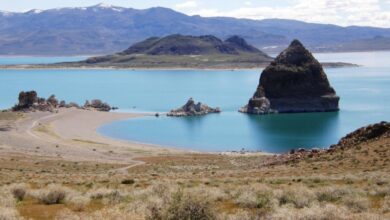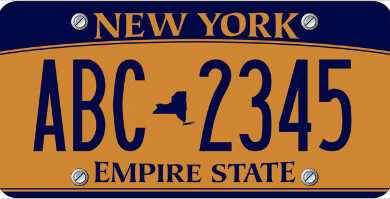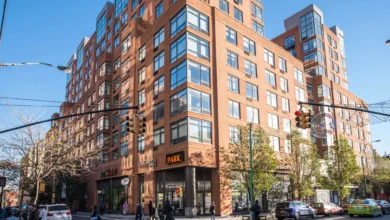San Joaquin County Zoning Map: Interactive GIS Viewer & Property Lookup

When it comes to planning property use, building development projects, or simply understanding your neighborhood’s regulations, the San Joaquin County zoning map is your go-to resource. This dynamic map provides access to a wealth of zoning data, from residential classifications to special-use areas and flood zones. With an intuitive GIS viewer and real-time property lookup, this map is more than just a planning tool—it’s a complete zoning intelligence hub.
The zoning map reflects how land is organized and managed in San Joaquin County, balancing growth, agriculture, conservation, and infrastructure. Whether you’re a property owner, developer, investor, or just a curious resident, the zoning map allows you to interact with local land-use laws in a transparent and accessible way. It supports responsible development and is one of the most important tools available for navigating county regulations.
What is the San Joaquin County Zoning Map?
The San Joaquin County zoning map is an official digital map that designates how every parcel of land within the county can be used. These designations range from residential (single-family, multi-family) to commercial, industrial, agricultural, and mixed-use. Zoning ensures that development follows the county’s General Plan and promotes organized community growth.
More than a static document, the zoning map is part of an online GIS system that offers real-time property lookup. This interactive platform lets users search properties by address or parcel number, view their zoning designation, and explore layers of information such as flood zones, school districts, and land use constraints. It empowers users to make informed decisions backed by accurate and official county data.
Why Zoning Maps Matter in Land Use and Development
Zoning maps are essential in shaping how communities grow and evolve. For example, the San Joaquin County zoning map helps ensure residential areas don’t clash with industrial operations, protects farmlands from urban sprawl, and maintains public safety through proper infrastructure planning. Without zoning, neighborhoods would lack structure, leading to haphazard growth and strained public services.
From an investment perspective, understanding a parcel’s zoning classification can determine its potential value. A parcel zoned for high-density housing, for instance, will have different market appeal and development requirements than one zoned for agricultural use. For developers, builders, or even homeowners adding an accessory dwelling unit (ADU), knowing the zoning designation is the first critical step.
Navigating the San Joaquin County GIS Viewer

The interactive GIS viewer that hosts the San Joaquin County zoning map makes zoning data user-friendly. You can zoom into a property, turn on or off various data layers, and use the parcel lookup tool to access public records. This feature is incredibly helpful for title companies, surveyors, real estate professionals, and government planners.
Users can explore other related datasets as well. For example, floodplain overlays help in identifying risks and determining insurance needs. The map also displays overlays for general plan land uses, zoning codes, parcel boundaries, and even historical zoning changes. All this functionality is available at your fingertips, without requiring any special software or technical skills.
Zoning Categories and What They Mean for You
On the San Joaquin County zoning map, every piece of land falls into one or more zoning categories. These include:
- Residential – Covers single-family homes, apartments, and townhomes with specific setback and height rules.
- Commercial – Includes retail stores, offices, and service businesses; often located near transportation corridors.
- Industrial – Supports manufacturing, storage, and distribution centers; usually located away from dense residential zones.
- Agricultural – Protects farming, ranching, and natural resource use, preserving the region’s agricultural heritage.
- Mixed-use and Special Districts – Allows for a blend of residential and commercial activity or includes overlays like environmental protections and flood control.
Each zoning classification includes unique building standards, use restrictions, and permitting procedures. Understanding your zoning district ensures that you’re building or using your property within legal boundaries, avoiding costly delays or penalties.
How San Joaquin Zoning Compares to Other Counties
Compared to areas like Los Angeles County, Maricopa County, or Orange County, San Joaquin offers a more agriculture-focused zoning structure. The county places significant emphasis on protecting farmland, maintaining open space, and managing suburban expansion in a controlled manner. The san joaquin county zoning map reflects this philosophy, with large portions dedicated to agricultural preservation and rural residential development.
Counties like Pinellas or Clark may have denser urban zoning focused on vertical development and mixed-use high-rises. In contrast, San Joaquin’s layout accommodates spacious communities, greenbelt buffers, and infrastructure planning that balances growth with sustainability. This zoning style is ideal for residents seeking both connectivity and rural charm.
Development, Permits, and Zoning Adjustments
If your property’s current zoning doesn’t align with your intended use, the San Joaquin County zoning map is still your best starting point. You’ll need to initiate a zoning change or apply for a variance or conditional use permit. The Community Development Department oversees these processes and provides detailed guidance through the GIS map interface.
Permits often depend on the zoning district’s regulations—what may be permitted in one district might be prohibited in another. For example, installing solar panels, building a guest house, or opening a home business could require special permissions. The map provides zoning codes and links to development standards so you can assess what’s allowed on your property.
Future Growth and Sustainable Planning in San Joaquin County
The San Joaquin County zoning map is more than just a development tool—it’s a vision for the future. It supports smart growth strategies, aligns with California’s housing goals, and balances urban development with environmental preservation. The county is actively planning for future transportation corridors, industrial expansion, and affordable housing zones.
Zoning will continue to evolve as population and economic pressures grow. Using the map to stay informed helps residents and stakeholders participate in public planning processes. Whether you’re a local business owner or an investor looking to build, understanding this tool is crucial for shaping a thriving, well-planned community.
Conclusion: Use the Zoning Map to Plan Smarter
The San Joaquin County zoning map empowers property owners, developers, and community members with clear, actionable insights. It eliminates guesswork, reduces risk, and provides an organized approach to land use. Whether you’re considering a remodel, launching a business, or investing in real estate, this map is an essential part of your planning toolkit.
From property lookup to interactive GIS overlays, San Joaquin has built one of the most transparent zoning platforms in California. Explore it, use it, and let it guide your next move.
FAQs
What is the San Joaquin County zoning map used for?
It is used to identify land use regulations, determine permitted property activities, and guide development planning.
How do I find my property on the zoning map?
Use the online GIS viewer to search by address or parcel number and view your property’s zoning classification.
Can I change my zoning designation?
Yes, through a zoning change application or a conditional use permit, depending on your intended use.
What makes San Joaquin’s zoning map different?
It focuses heavily on preserving agricultural land while providing accessible online tools for property research.
Is the zoning map updated regularly?
Yes, the map is maintained by the county’s planning department and reflects current zoning ordinances and overlays.
You may also read: What is a Self Blunting Needle?





